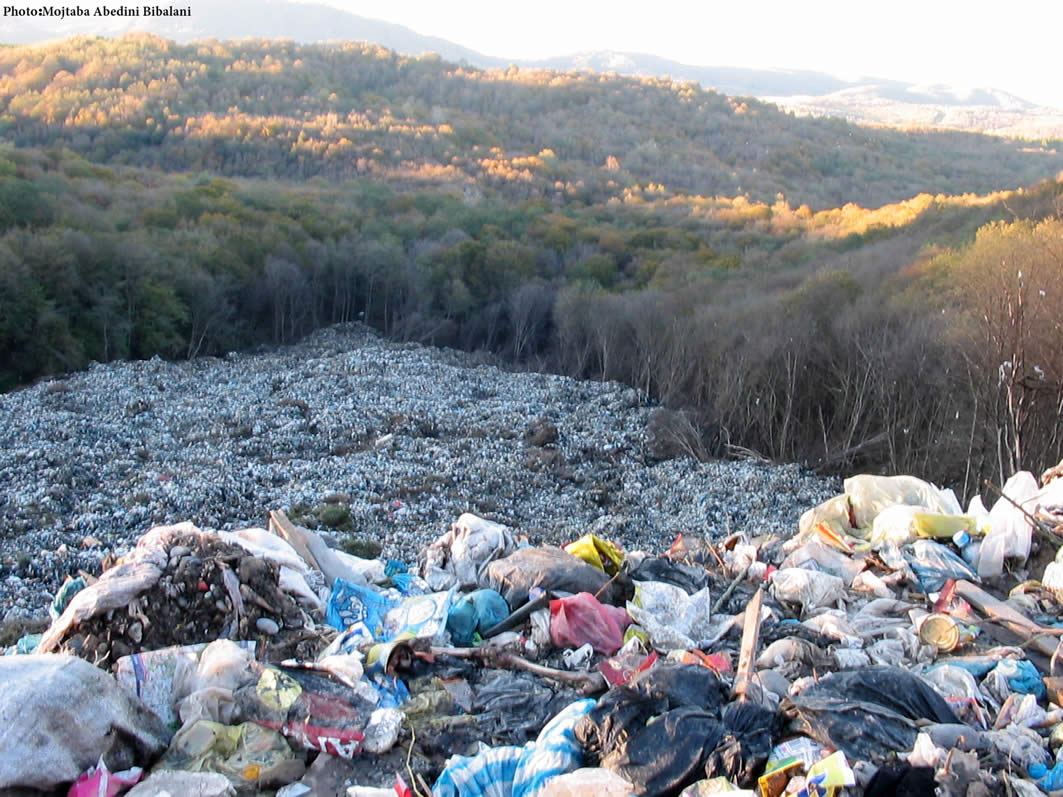Awareness among school children regarding Gilan forests is created through an old catchy rhyme, describing a playful kid scampering around in the idyllic woods, expressing his feelings of joy and jubilation. The narrative made sense at the time of its composition when the pristine Gilan Province was surrounded by breathtaking lush, green forests.
Gilan lies along the Caspian Sea in northern Iran. It has by a large margin, the heaviest rainfall in the country – hence the existence of rich green forests which give the province a unique ecosystem. But now the forests are facing a serious threat from excessive dumping of garbage which is quickly turning into an environmental crisis. Something that is giving Gilan forests the look of a dumping ground.
According to the provincial Department of Environment (DoE), waste generation per person per day in Gilan is between 800g to 1.2 kg, higher than the average national waste generation of 700g.
Waste Crisis
Mohammad Reza Borji, who heads the provincial DoE, said in an interview with Iranian Students’ News Agency (ISNA) that “wrong methods of disposal are the main factors contributing to the waste.” He said river banks, areas near forests and sea shores are becoming dumping grounds. ‘’Unfortunately, no study or action has been taken on efficient ways for landfill disposal; hence the increasing threat to the ecosystem.”
He further warned that the proximity of ground water to the surface in landfills is causing water pollution on a large scale. Dumps and landfills are a threat to water supplies when water percolates through waste, picking up a variety of substances such as metals, minerals, organic chemicals, bacteria, viruses, explosives, flammables, and other toxic materials. The contaminated water is called leachate and is produced when the waste becomes saturated with water. Waste with high moisture content which receive artificial irrigation through rainwater, and surface or groundwater infiltration produce leachate and methane gas.
Borji said due to the widespread waste and trash dumped on the ground, it is hard to measure the scale of the contamination,” but it is seen that many sea creatures and birds die annually due to the pollutants and even people are afflicted with skin and digestion problems after consuming or swimming in contaminated water.”
Management
He also warned about the ill-effects of waste on climate change saying that for every ton of dumped trash, two cubic meters of greenhouse gases are released into the atmosphere. He pointed out that abundant rainfall accelerates the infiltration process of leachate and that the only way to address the problem is to install a system to absorb “leachate and purify the water.”
He noted that under the Fifth Five-Year Economic Development Plan (2011-16), all landfills disposal in the northern provinces should halt and be replaced by composting and burning of waste.
Meanwhile, the governor of Gilan had earlier announced that four incineration plants are operating in the province. Mohammad Ali Najafi said that since Gilan is a major tourist attraction, too much waste is generated, with the city of Rasht being the biggest generator. Najafi said that the office of governor and the municipality have signed a contract to launch a new incineration plant at a cost of $300,000; the plant is expected to be ready for operation within two years.
Incineration Best
Regarding the Caspian Sea pollution, Najafi said “the discharge of home and agriculture sewage into the sea is the main cause, but law enforcement and civic officials are determined to confront any worsening of the problem.”
He maintained that incineration remains the most efficient way to dispose waste and said attempts to compost waste have not been successful due to shortage of plants and the low use of organic fertilizers by farmers.
Composting involves collecting organic waste, such as food scraps and garden trimmings, and storing it under conditions designed to help it break down naturally. The resulting compost can then be used as a natural fertilizer. Moreover, only 50 to 60% of the waste is suitable for composting.
High Costs
Farhad Karami, urban deputy at the governor’s office, also attributes the inadequacy of composting to the high cost of installing ceilings for these facilities as they are largely without ceilings. Farmers are also unwilling to use compost fertilizer since they consider it to be of inferior quality.
Therefore, incineration remains the main option. Incineration converts waste into ash, fuel gas, and heat waste combustion, which is particularly popular in countries such as Japan where land is scarce. It is profitable because of the electricity it generates. Denmark and Sweden have been leaders in using the energy generated from incineration for more than a century.
Hojjat Shabanpoor, another official at the governor’s office announced the finalization of the plan to build an electric power producing incineration plant. Some of the electricity generated will be sold to the Rasht Electricity Department. He said foreign companies have shown interest to take part in the project.
Now, one has to wait and see whether the initiatives will be pursued to the end, or the environment will be left to the ravages of pollutants and toxins.


